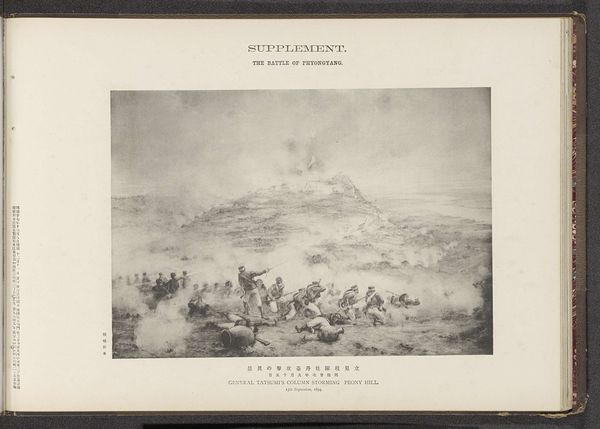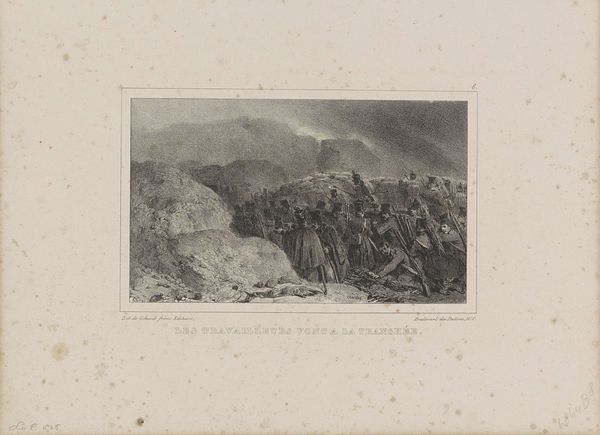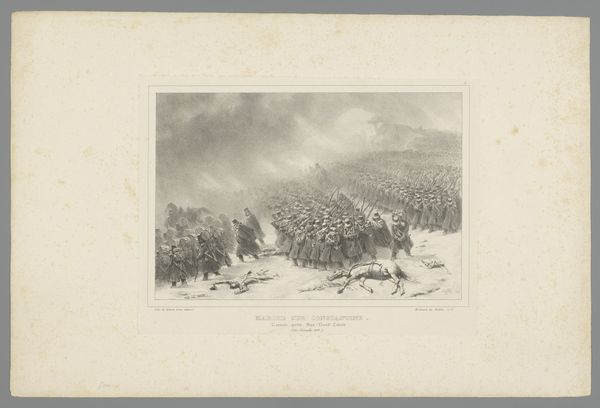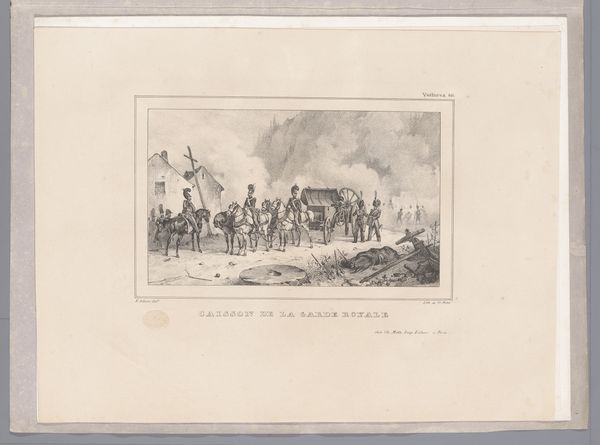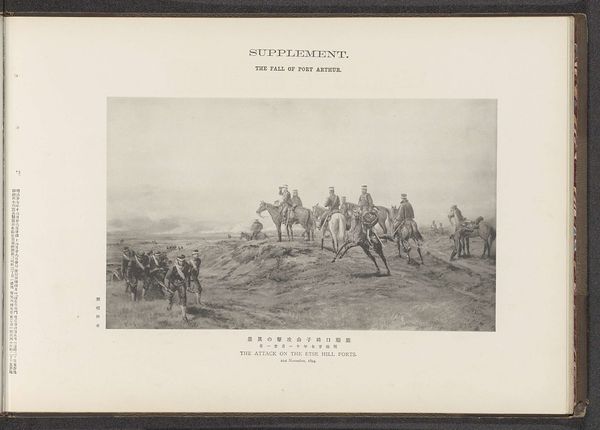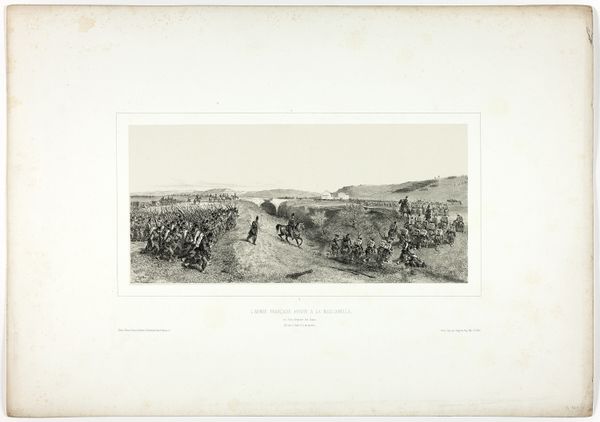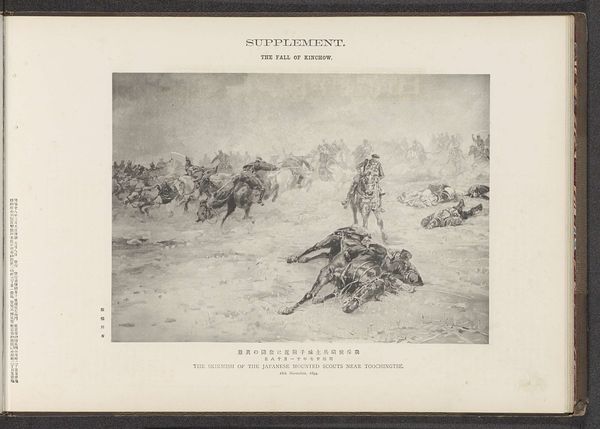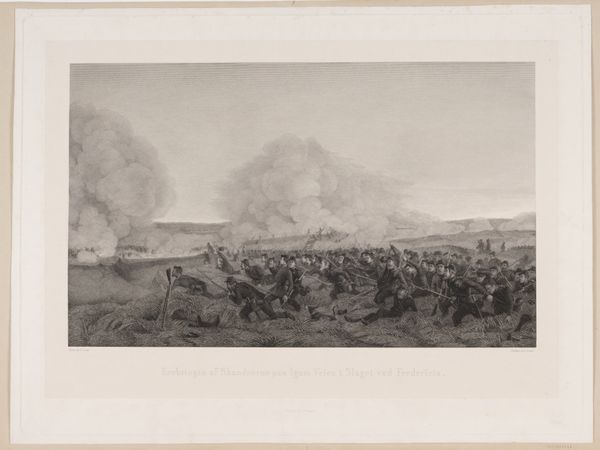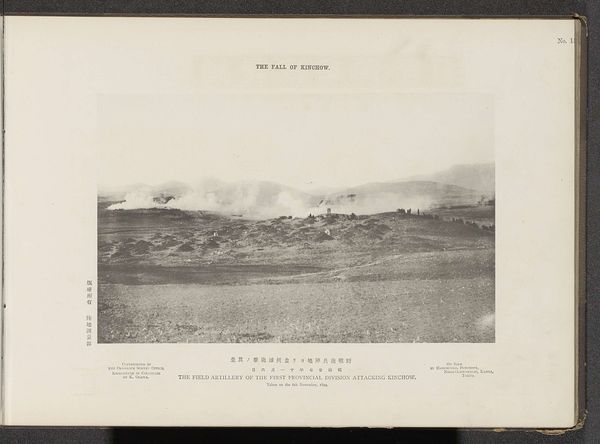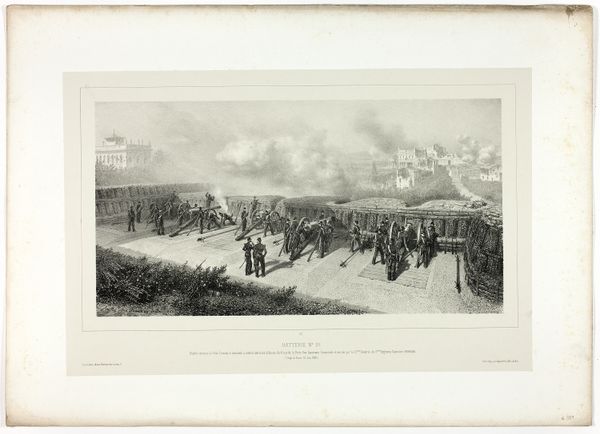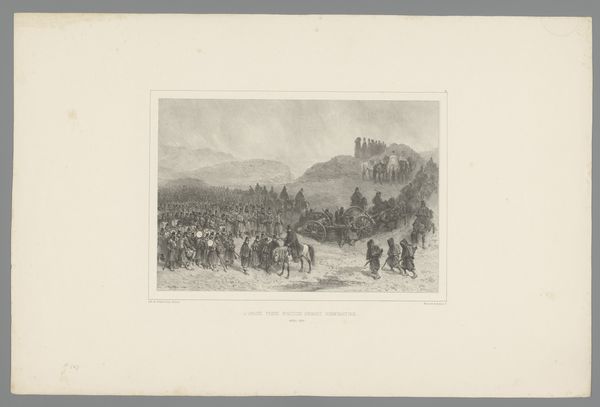
print, photography, engraving
#
ink paper printed
# print
#
asian-art
#
landscape
#
photography
#
history-painting
#
engraving
#
realism
Dimensions: height 175 mm, width 284 mm
Copyright: Rijks Museum: Open Domain
Curator: Here we have "The Japanese Infantry Storming the Etse Hill Forts," a print made before 1895 by the Ordnance Survey Office. It appears to combine engraving and photography on ink and paper. What are your initial thoughts? Editor: My breath actually caught a bit. It feels… chaotic. So many figures blurring into a smoky landscape. It evokes that feeling of being caught in the churn of something enormous and impersonal, something undeniably tragic. Curator: The composition certainly contributes to that feeling. The blurred lines, the sense of relentless forward motion… We have to remember this was produced by the Ordnance Survey Office. This isn’t a purely artistic endeavor. There’s a documentary and perhaps even propagandistic intention behind it. The act of creation and dissemination – printing, photography, and engraving. What does that process emphasize for you? Editor: It speaks to scale, doesn't it? The use of photography points to a desire for authenticity. It suggests a scientific capture of reality, then coupled with the precise labor of engraving it underlines human skill and precision. So the combination tries to give us, as viewers, what? Some kind of ‘true’ image of war? But the very means of its production also serve to sanitize the horrors that lay under it, in the bodies. Curator: Indeed. Consider the use of ink and paper; relatively accessible materials which underscore a need for reproducibility. This image, documenting the Japanese storming of the Etse Hill forts, becomes accessible, shared widely, solidifying a specific perspective on the conflict. Editor: It's also striking how devoid of individual expression each soldier appears. They are simply marks, lines making up the surge. Makes you think about the role of the individual against this war-machine context. Is it meant to glorify military action? To simply illustrate it? Curator: Good questions. Its realism and "history painting" label definitely lean into glorification, maybe that makes sense in light of Japan's rising power. We tend to forget that photographic and engraving techniques are far from objective – the printing and distribution chain here serves specific colonial and military purposes. Editor: So, ultimately we see not only the representation of the military’s action itself but an illustration of the means used to produce it – the machines, materials, hands at work. Curator: Precisely! A sobering thought, considering what the artwork depicts. Thank you. Editor: My pleasure. The ghost in this machine seems all too hauntingly present today as well, doesn't it?
Comments
No comments
Be the first to comment and join the conversation on the ultimate creative platform.
